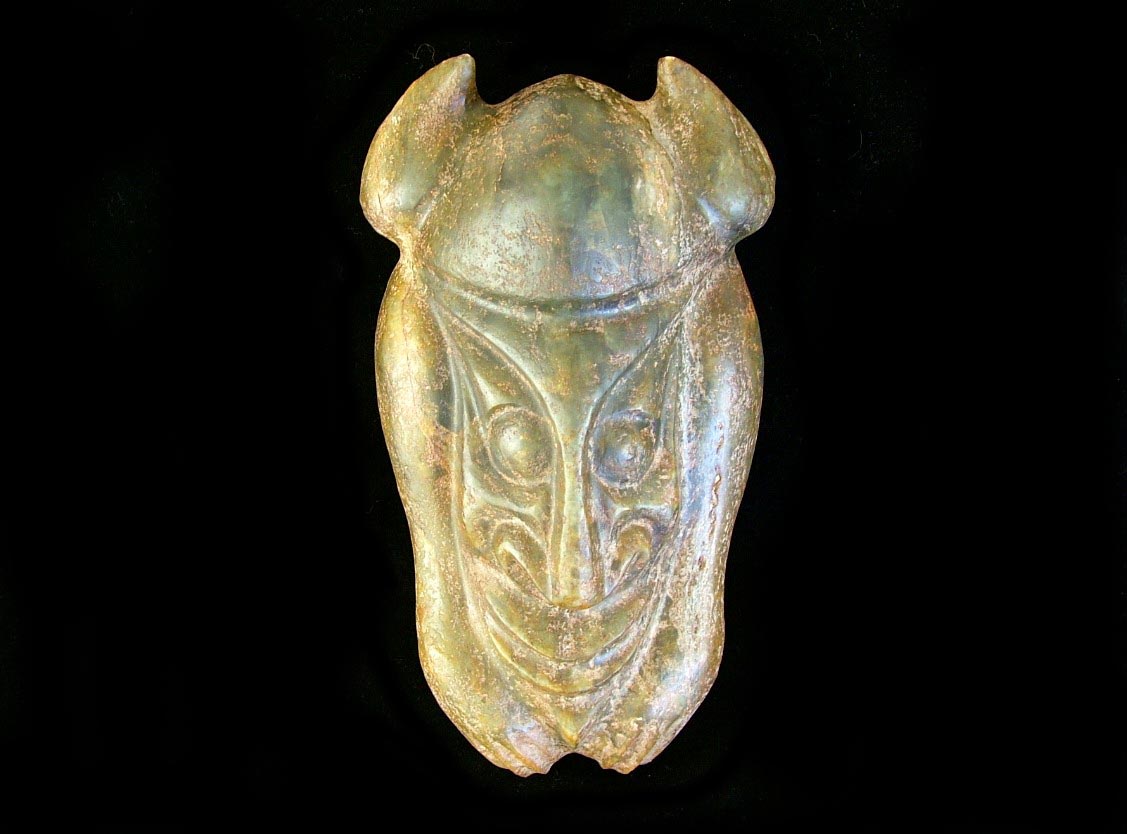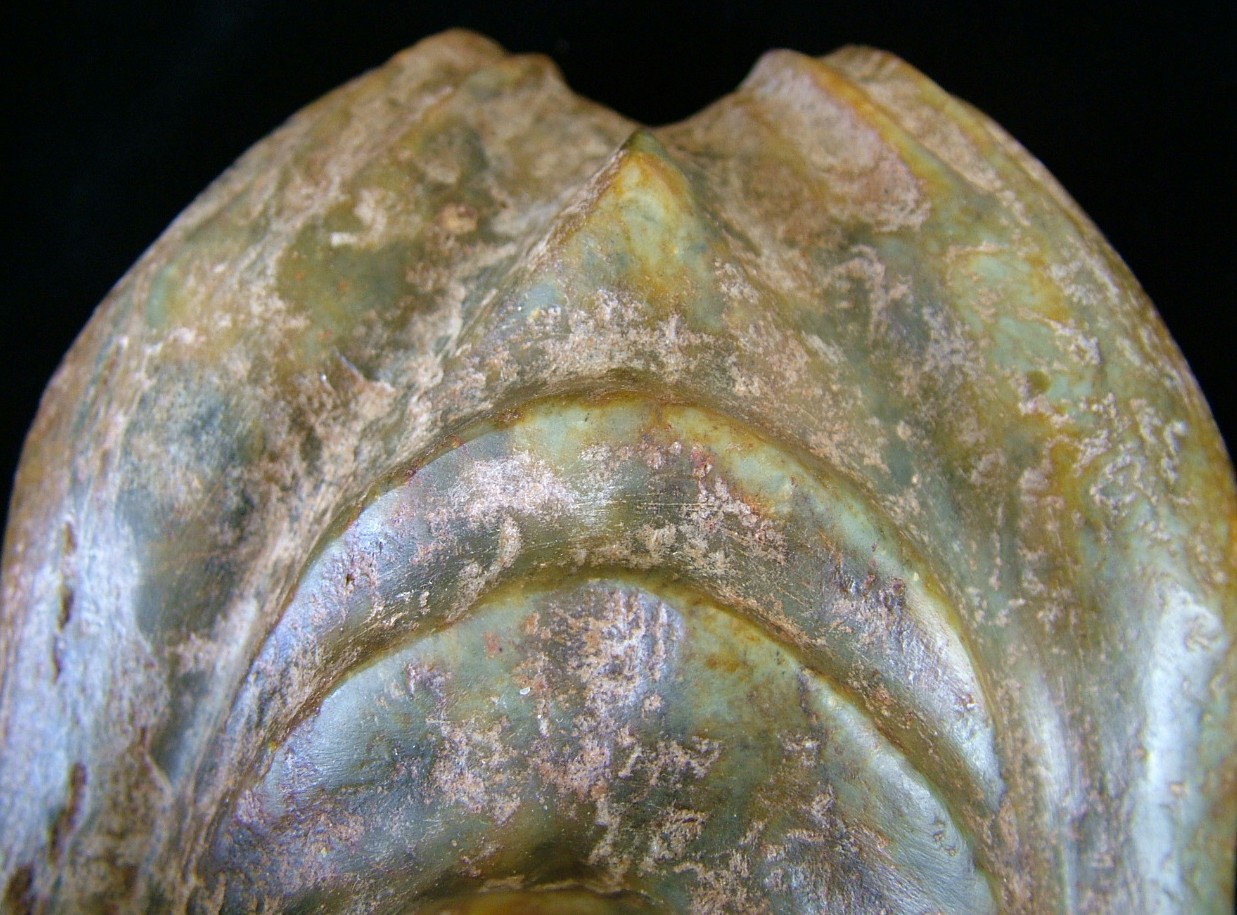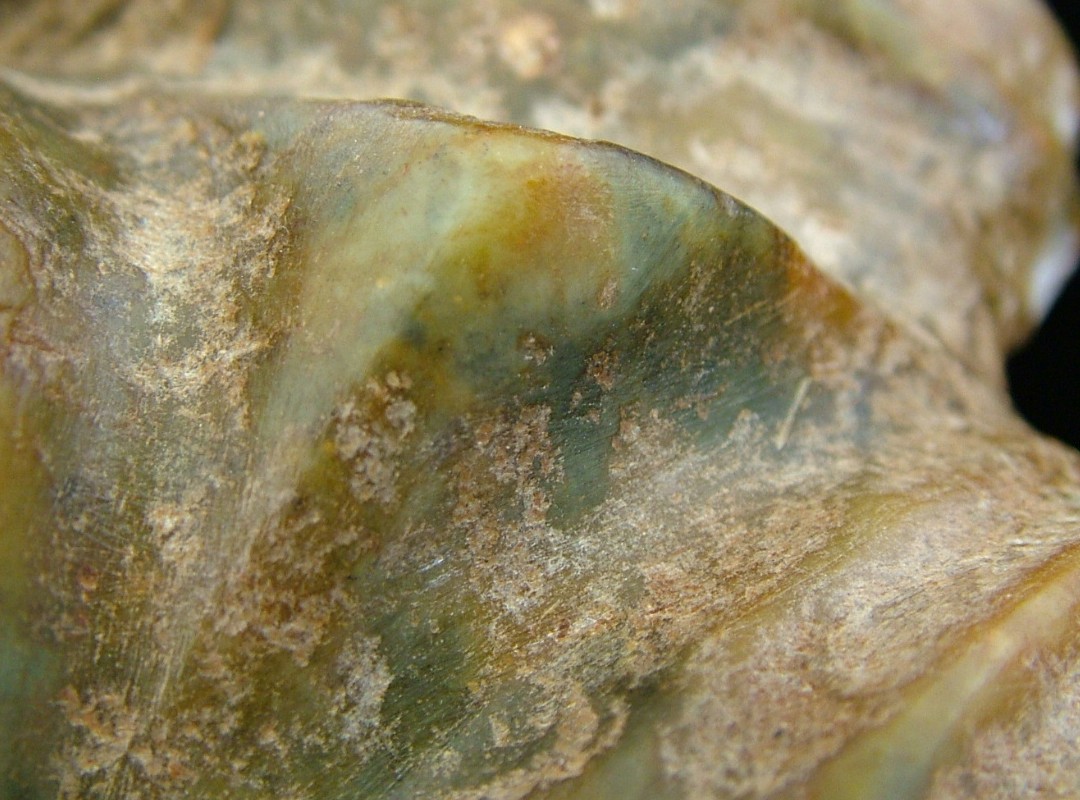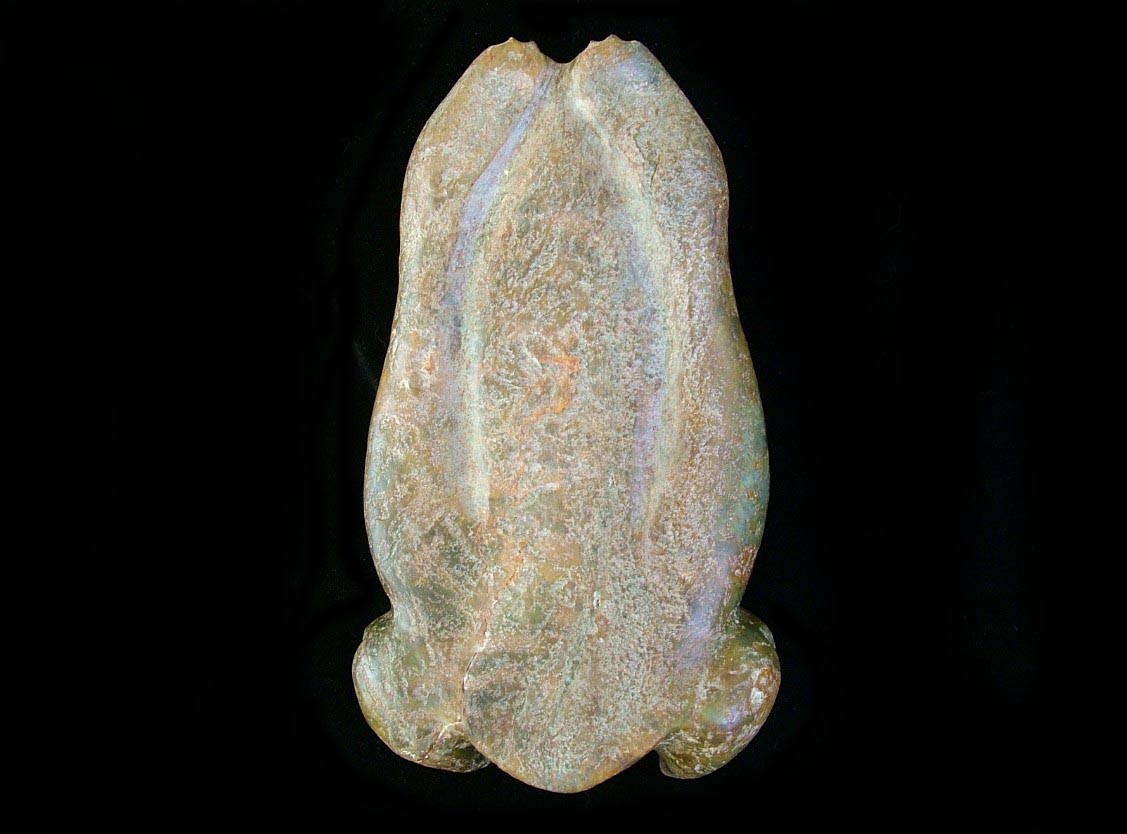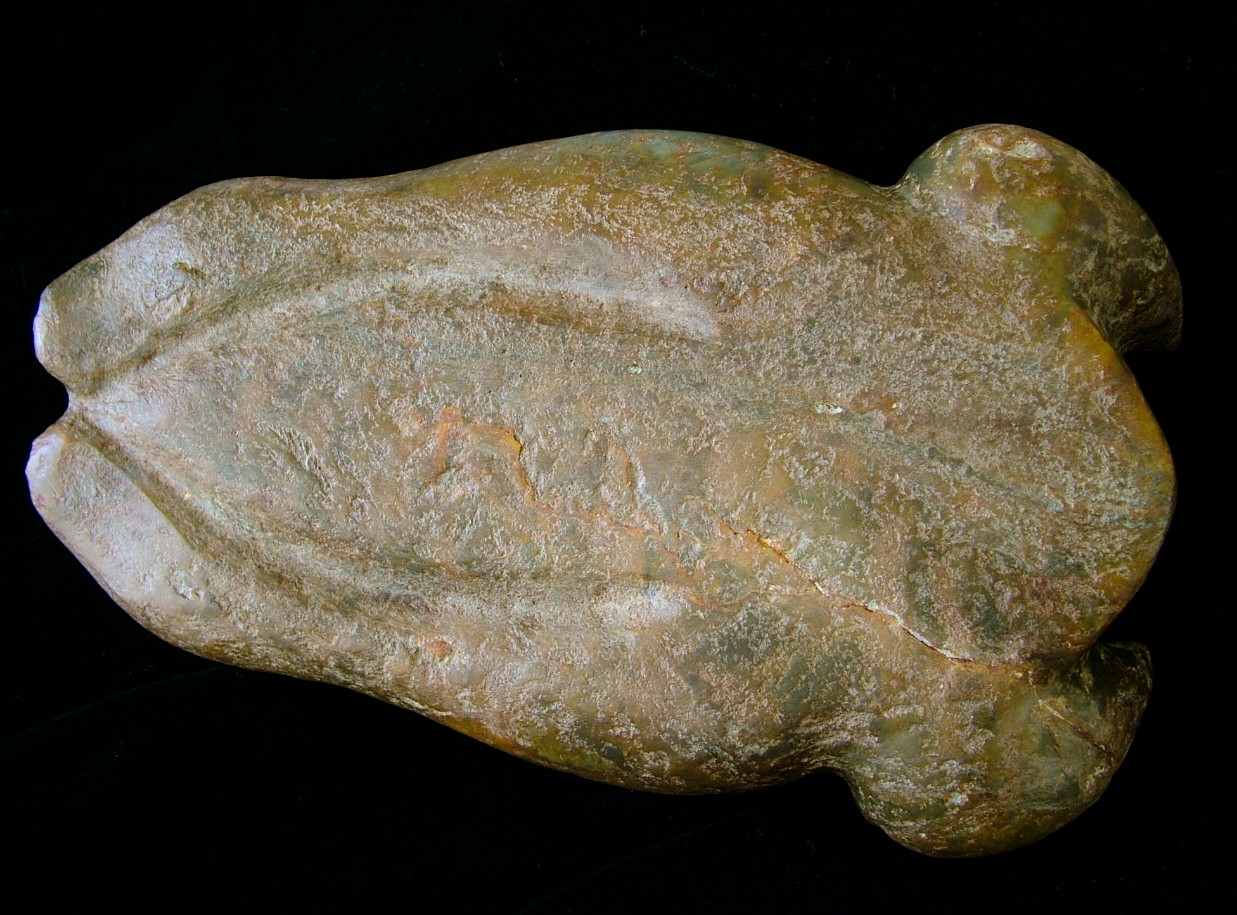 |
|---|
Bull Wolf |
||||
| Picture Group 1 |
||||
|
THIS ARTIFACT IS PART OF AN ONGOING RESEARCH PROJECT. THREE OF THE ANCIENT CHINESE ARTIFACTS POSTED HERE WERE REWORKED DURING THE HAN DYNASTY.
Preliminary findings suggest that the added art had been made by a member of a tribal confederation that had either invaded ancient Northern China or had been hired on as mercenaries by a host leader. They may have possibly been a mixture of the Yuezhi (known in Bactria as the Kushans) or the later Hephthalites (also known as the Sveta Huna (White Huns)) and an unknown Mongolian tribe or tribes. A connection to the earlier Xiongnu tribal confederation is also being considered. Right away I would like to mention that this artifact is posted on the kingarthurbanner.com website, the info. with that will soon be updated. This jade artifact is in fact from the Hongshan culture (C. 4700 BC to 2900 BC). At some time during the latter part of the Han Dynasty (206 BC to 220 AD) the artifact was treated with a lead wash, then in certain areas with lead overlay, then in certain areas resins were applied, it was then painted in certain areas, and then finely it was sealed with a coating of what appears to be Isinglass (Sturgeon glue). Much of the painted areas are along age cracks, this shows that the paint was applied much later then when the piece had originaly been made. The iconography with it's possible connection to Roman Legionaries will be explained shortly. |
||||
Picture Group 2
|
||||
| Information. |
||||
| Picture Group 3 |
||||
| Information. |
||||
Picture Group 4
|
||||
| Information. |
||||
Picture Group 5
|
||||
| Information. |
||||
|
| |
Picture Group 6 |
Information. | |

